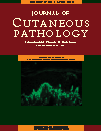Idiopathic Lymphoplasmacellular mucositis-dermatitis
Abstract
Background: In 1952, Zoon described a series of patients with dense plasma-cell infiltrates in the glans penis. Since then, similar Zoon-like lesions (ZLL) have been described on the external female genitalia and in the airways, for which over 20 designations currently exist.
Methods: Twenty-eight cases of ZLL, twenty-two cases of lichen planus, eight cases of plasmacytoma and two cases of syphilis were evaluated from the surgical pathology archive at the University of Virginia. Twenty-four histologic data points were tabulated in each case, including 12 epidermal and 12 dermal features.
Results: Histopathologic findings were similar in the majority of cases of ZLL, regardless of their location. They demonstrated superficial cutaneous erosions, basal vacuolar alteration and many showed lozenge-shaped keratinocytes in the epiderms. The dermis contained a dense inflammatory infiltrate composed predominantly of plasma cells, with scattered neutrophils and lymphocytes. Dense fibrosis was seen in the upper dermis.
Conclusions: A uniform nomenclature for ZLL does not exist. Based on the results of this analysis, we suggest that the generic term idiopathic lymphoplasmacellular mucositis-dermatitis be considered to encompass the lymphoplasmacellular infiltrates in the skin and mucosal surfaces considered herein. This designation is morphologically descriptive and can be applied regardless of anatomic location.
Brix WK, Nassau SR, Patterson JW, Cousar JB, Wick MR. Idiopathic lymphoplasmacellular mucositis-dermatitis.




